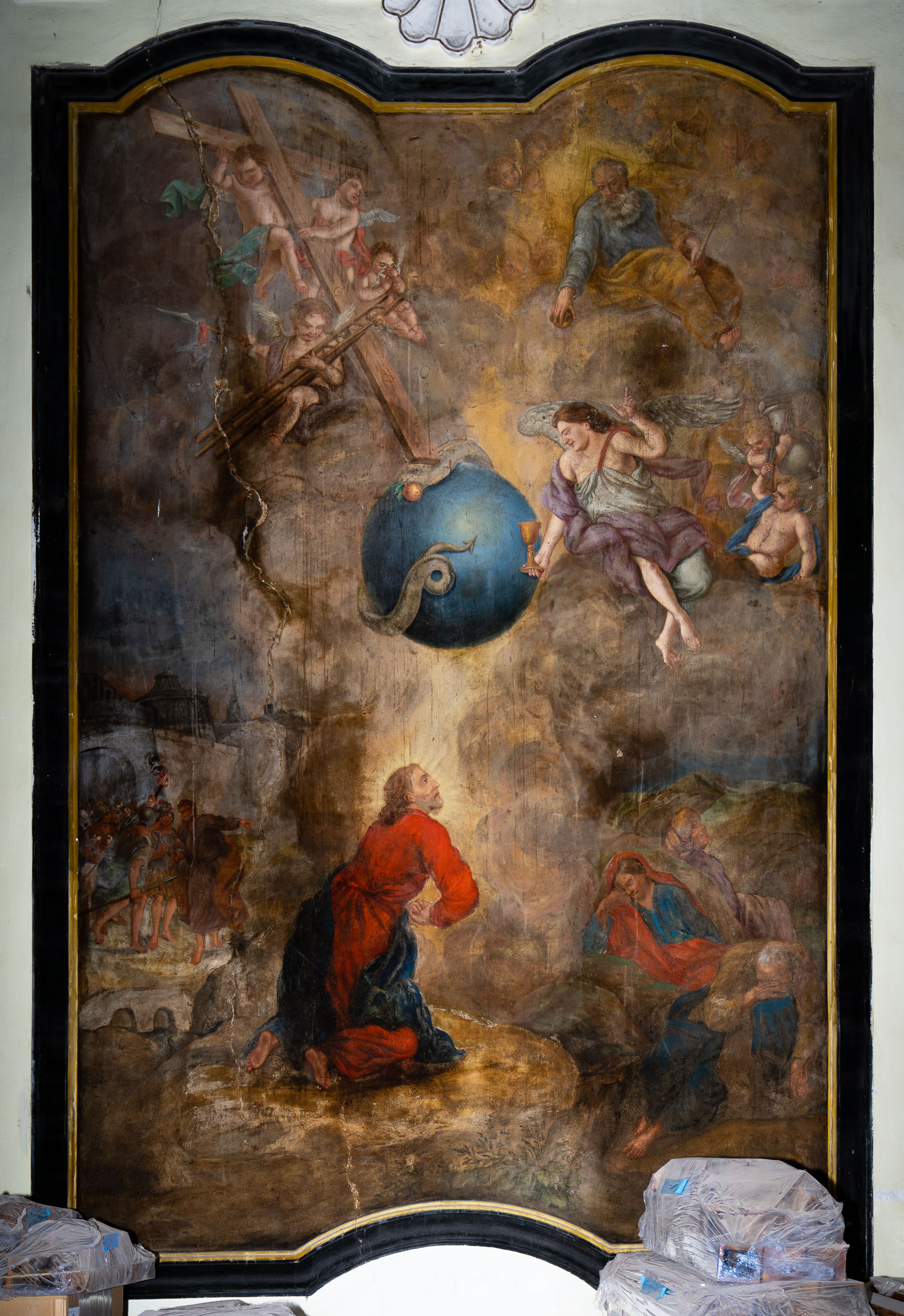
Prayer in the Garden
- Style
- Baroque
- Date
- 40s, 18th century
- Material and technique
- Dry fresco
- Size
- H 600 x W 300 cm
- Location
- Church of the Assumption of the Blessed Virgin Mary in Żagań, Poland
- Description
- The fresco "Prayer in the Garden" was executed in the 1840s by the workshop of Jeremias Joseph Knechtel. This is evidenced not only by the formal features of the painting and its Baroque frame, but also by analogies with Knechtel's signed painting of the same subject from 1721, located in the former Ursuline convent in Świdnica. The Żagań Prayer in the Garden of Gethsemane has a considerably expanded iconographic programme compared to the Świdnica version of this subject. In addition to Jesus, the angel with the chalice and the sleeping apostles, a group of angels from the Arma Christi also appears in the painting. Christ's pending sufferings are also foreshadowed by a group of Roman soldiers visible to the left of the fresco and Judas pointing them to the olive garden. A globe entwined by the serpent-Satan, signifying human sins, is also an important element of the representation. The cross crushing the head of the serpent is a foreshadowing of the most important fruit of the passion of the Son of God: through the sacrifice and death on the cross, the world is to be freed from Original Sin. The thorough repainting of the painting in the 19th century makes the Prayer in the Garden today significantly different from the typical compositions of Knechtel's brush. Although the poses of Christ, the angel with the chalice or the sleeping apostles are identical to those in the artist's signed painting of 1721, the way in which the robes or faces are built up deviates from the painting manner of the Legnica master and betrays the untrained hand of the 19th century restorer. The Putta with the Instruments of the Passion, despite the dance-like movement characteristic of the figures in Knechtel's works, come close to figures typical of non-professional, archaizing folk art through their coarsely marked outline or mis-shaped chiaroscuro.